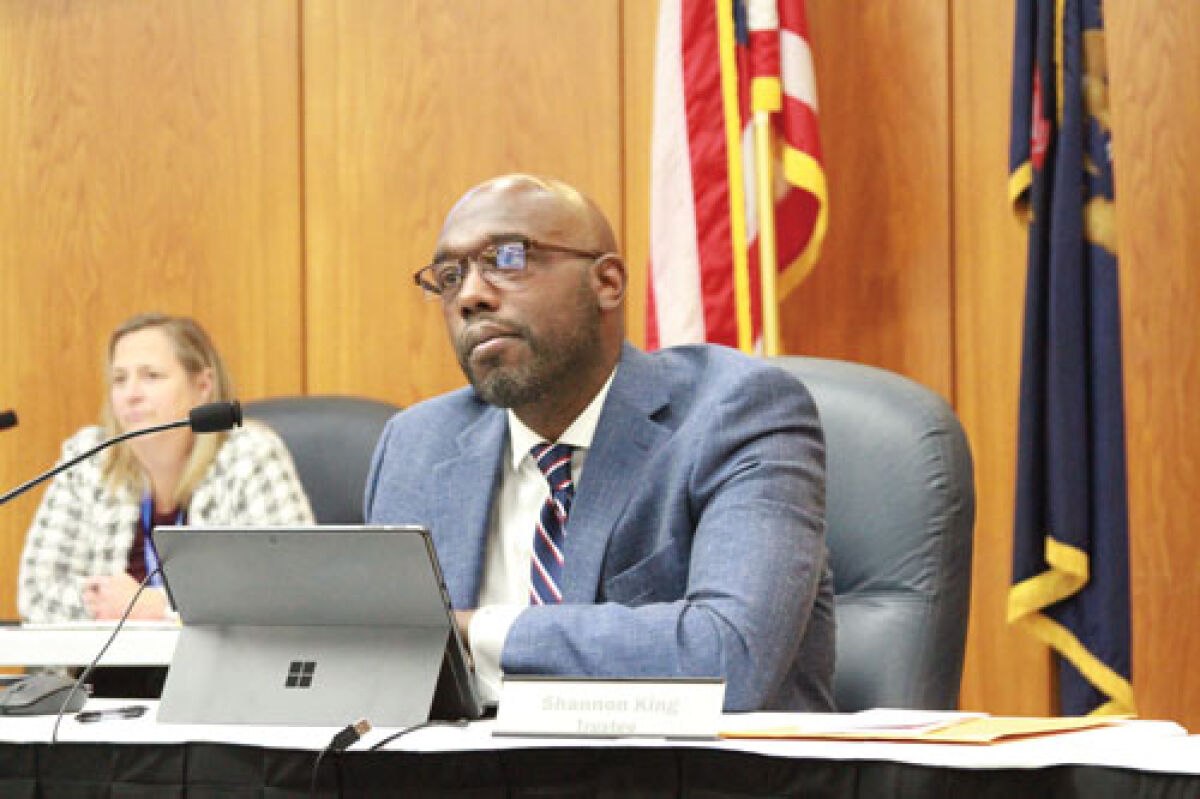CLINTON TOWNSHIP — Kratom was the focus of a Clinton Township Board of Trustees special meeting on April 21.
Trustee Shannon King spearheaded the hearing, bringing those for and against the herbal substance that, according to the National Institute on Drug Abuse, “can produce opioid- and stimulant-like effects.”
No action was taken by the board on kratom at the meeting, while Trustees Bruce Wade and Julie Matuzak wanted to look at possible state-level legislation.
“There’s some strong danger in my mind,” King said. “Some other people may not feel that way. That said, I’m also cognizant that I’m not just representative of my own thoughts. I’m representative of this township.”
Kratom is a drug derived from mitragyna speciosa, a plant typically found in Southeast Asia. It is currently illegal in Alabama, Arkansas, Indiana, Rhode Island, Vermont and Wisconsin. It’s typically found in smoke shops, gas stations and convenience stores.
Charlene McGunn, executive director of the Chippewa Valley Coalition for Youth and Families, spoke about kratom at the meeting. She explained that there was currently no oversight for it and that there was the potential for abuse since it triggered opioid-like effects. McGunn explained there are no dosage specifications and there can be the potential for contamination by things like bacteria.
Users she has spoken to said the drug addresses pain and increases attention, according to McGunn. She said kratom has been on her radar for about three and a half years. She would see pregnant women who attempted to use the drug to control nausea symptoms. Side effects from long-term use have been linked to cardiovascular issues and liver damage. McGunn said the drug’s primary users are adults.
“Kratom is not a drug of choice for youth,” she said.
McGunn did not have data about the sale of kratom in response to a question from Trustee Julie Matuzak. Trustee Bruce Wade asked if there is the potential for it to be laced with something.
“I’ve not heard of it being laced with other things,” McGunn said. She later added that there is no standardization of the active ingredient.
Project Vox coordinator Lauren Letzmann spoke about the dangers of kratom.
“They’ve been positioned as safe alternatives to alcohol or described using terms like ‘non-inebriating bliss,’” she said. “These products are often attractively packaged and are sold in gas stations and convenience stores. They resemble energy drinks, teas and supplements.”
Letzmann said she encountered a kratom user who was trying to kick caffeine and used it as an alternative, finding that the addictive qualities were similar to alcohol dependence. Another person Letzmann encountered tried to use the substance as a replacement for opioid addiction.
“These are not isolated incidents,” Letzmann said. “I have witnessed the physical, emotional and social toll that it has on individuals and their families.”
Letzmann said that kratom doesn’t usually show up on a standard drug test.
Lora Romney, a kratom advocate and user, came into the meeting remotely. She’s in favor of the drug’s regulation, similar to Utah’s Kratom Consumer Protection Act. This would add age restrictions and control the quality of what’s available to consumers.
She said kratom is typically used for pain, anxiety and mood and that it has the potential to help people with post-traumatic stress disorder, depression and opioid addiction.
Romney said it could play a vital role in combating the opioid crisis. She said those who have chronic pain often turn to kratom when they have difficulty getting the pain medications they need. Those looking for an alternative with fewer negative side effects are also drawn to it. Romney said she was on gabapentin for pain management, which had negative effects on her short-term memory.
“With kratom, the biggest side effect you see is constipation and dehydration,” she said.
Romney has suffered from chronic facial nerve disease for 13 years. She was prescribed opioids but, with kratom, she was able to get off these drugs and live a productive life.
“When I found kratom, it allowed me to get off all opioids and be able to function — work full time, volunteer, be a mom — it literally has changed my life,” she said.
She said withdrawals are minor when using kratom in comparison to opioids.
“It is important to note that dependence does not mean addiction,” Romney said. “I am dependent on medication. I’m dependent on kratom to control my pain, but that does not mean that I am addicted.”
Romney did caution against synthetic versions of kratom.
“This is not kratom. These are pure synthetics,” she said. “They’re extremely powerful. They have a 14-22 times greater morphine bonding effect, and they are very addicting.”
Wade said that state Rep. Joe Aragona wanted him to relay that there is legislation in the works for restriction of kratom for those under 21 years old.
Township attorney Linda McGrail explained that the township could do an outright ban of kratom or do nothing and wait to see if anything is done at the state level. She later said the maximum fine that could be given under a ban would be a misdemeanor punishable by up to 93 days in jail and/or a $500 fine.
Resident John Grossenbacher questioned whether or not it was up to the township to do anything about its legality. Gorssenbacher was also concerned about government officials advising citizens about their medical decisions.
“Let the state regulate it and then the stores will comply rather than using our resources,” he said.
Resident Fred Nienstedt worried about the impacts of kratom on families.
“What kinds of limitations can the state ever really have?” Nienstedt said.
Andrew Kulpa, of Bloomfield Township, spoke in favor of kratom’s regulation.
“While kratom is definitely not risk-free, when it is used responsibly it is shown to have a very high safety profile,” he said.
Kratom advocate and user Misty Brown called in remotely to speak about it. She spoke to how the drug helped her kick opioid addiction.
“I am a functioning member of society again,” Brown said. “I’m a thriving mother again. I pay taxes again. I am no longer a burden to my kids, and I am now a first-time grandma.”
 Publication select ▼
Publication select ▼






















